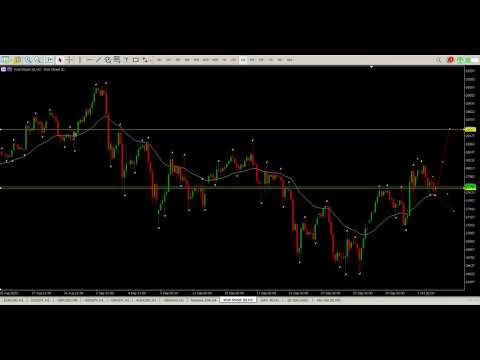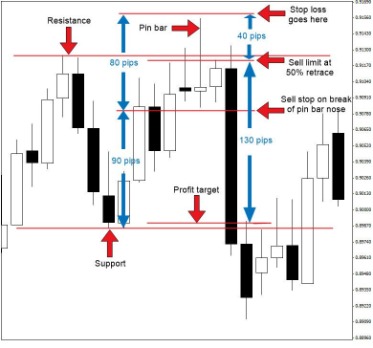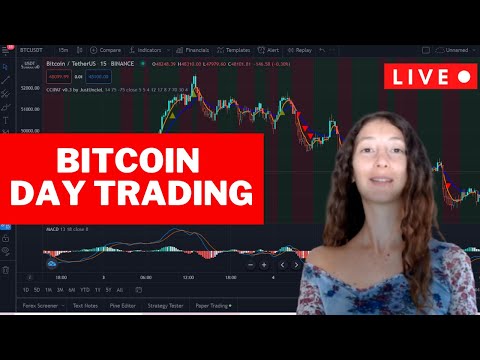Technical Analysis Of Price Charts Bar By Bar For The Serious Trader
Table of Contents Heading
- Ebook Reviews
- More Chart Patterns Favoured By Price Action Traders
- Trend
- Trading Price Action Reversals: Technical Analysis Of Price Charts Bar By Bar For The Serious Trader
- Research And Markets: Trading Price Action Reversals: Technical Analysis Of Price Charts Bar By Bar For The Serious Trader
- Related Books To : Trading Price Action Trading Ranges: Technical Analysis Of Price Charts Bar By Bar For The Serious Trader
A range is not so easily defined, but is in most cases what exists when there is no discernible trend. It is defined by its floor and its ceiling, which are always subject to debate. The New Science of Technical Analysis, DeMark– DeMark was one of my first intros to trading and the most I gained from him was to simply “let go” of conventional thought. Trading Price Action Trends, Brooks– Al Brook’s work is perhaps the closest thing you will find to the type topics discussed on our site. A daily collection of all things fintech, interesting developments and market updates. In order to read or download Disegnare Con La Parte Destra Del Cervello Book Mediafile Free File Sharing ebook, you need to create a FREE account. All trademarks and registered trademarks appearing on oreilly.com are the property of their respective owners.

At the start of what a trader is hoping is a bull trend, after the first higher low, a trend line can be drawn from the low at the start of the trend to the higher low and then extended. When the market moves across this trend line, it has generated a trend line break for the trader, who is given several considerations from this point on. If the market moved with a particular rhythm to-and-fro from the trend line with regularity, the trader will give the trend line added weight. Any significant trend line that sees a significant trend line break represents a shift in the balance of the market and is interpreted as the first sign that the countertrend traders are able to assert some control. An ii after a sustained trend that has suffered a trend line break is likely to signal a strong reversal if the market breaks out against the trend.
Ebook Reviews
Throughout the book, Brooks focuses primarily on 5 minute candle charts–all of which are created with TradeStation–to illustrate basic principles, but also discusses daily and weekly charts. And since he trades more than just E-mini S&P 500 futures, Brooks also details how price action can be used as the basis for trading stocks, forex, Treasury Note futures, and options. Many of the strongest trends start in the middle of the day after a reversal or a break-out from a trading range.
Since many traders place protective stop orders to exit from positions that go wrong, all the stop orders placed by trapped traders will provide the orders that boost the market in the direction that the more patient traders bet on. The phrase “the stops were run” refers to the execution of these stop orders. Since 2009, the use of the term “trapped traders” has grown in popularity and is now a generic term used by price actions traders and applied in different markets – stocks, futures, forex, commodities, cryptocurrencies, etc.
More Chart Patterns Favoured By Price Action Traders
All trapped trader strategies are essentially variations of Brooks pioneering work. At that point when the trader is satisfied that the price action signals are strong enough, the trader will still wait for the appropriate entry point or exit point at which the signal is considered ‘triggered’. During real-time trading, signals can be observed frequently while still building, and they are not considered triggered until the bar on the chart closes at the end of the chart’s given period. There is no widely accepted definition of price action, but I think a broad one is most helpful for traders, states Al Brooks of BrooksTradingCourse.com. Especially after the appearance of barb wire, breakout bars are expected to fail and traders will place entry orders just above or below the opposite end of the breakout bar from the direction in which it broke out.

When the market is restricted within a tight trading range and the bar size as a percentage of the trading range is large, price action signals may still appear with the same frequency as under normal market conditions but their reliability or predictive powers are severely diminished. Brooks identifies one particular pattern that betrays chop, called “barb wire”. It consists of a series of bars that overlap heavily containing trading range bars.
If you’re looking to make the most of your time in today’s markets the trading insights found in Price Action Trends Bar by Bar will help you achieve this goal. This book is insanely rich in material, however that simultaneously is its weak point. The book being packed with huge amounts of info, is insanely difficult to read and you will find yourself being confused and overwhelmed by even just a paragraph of information. Al Brooks rewrote and elaborated the material in this book into three separate books which are written in a more comprehensive manner. I do like his views on some of this classics of price action, but he should get a better editor. Reversals are considered to be stronger signals if their extreme point is even further up or down than the current trend would have achieved if it continued as before, e.g. a bullish reversal would have a low that is below the approximate line formed by the lows of the preceding bear trend.
I wanted to show traders how to trade price action consistently like a professional, states Al Brooks of BrooksTradingCourse.com. He is an international lecturer on trading and the author of several best-selling trading books and With 130 hours of videos, the Brooks Trading Course is the most comprehensive information on how to trade and it has excellent reviews. Over the course of his career, author Al Brooks, a technical analysis contributor to Futures magazine and an independent trader for twenty-five years, has found a way to capture consistent profits regardless of market direction or economic climate.
Japanese Candlesticks show demand with more precision and only a Doji is a Doji, whereas a price action trader might consider a bar with a small body to be a range bar. It is termed ‘range bar’ because the price during the period of the bar moved between a floor and a ceiling and ended more or less where it began. If one expanded the time frame and looked at the price movement during that bar, it would appear as a range.
Trend
With this book, Brooks–a technical analyst for Futures magazine and an independent trader–demonstrates how applying price action analysis to chart patterns can help enhance returns and minimize downside risk. Along the way, you’ll discover the importance of understanding every bar on a price chart, why particular patterns are reliable setups for trades, and how to locate entry and exit points as markets are trading in real time. In other words, double top twins and double bottom twins are with-trend signals, when the underlying short time frame double tops or double bottoms fail. Consecutive bars with relatively large bodies, small tails and the same high price formed at the highest point of a chart are interpreted as double top twins. These patterns appear on as shorter time scale as a double top or a double bottom. Since signals on shorter time scales are per se quicker and therefore on average weaker, price action traders will take a position against the signal when it is seen to fail. On the other hand, in a strong trend, the pull-backs are liable to be weak and consequently the count of Hs and Ls will be difficult.
- Page by page, Brooks skillfully addresses how to spot and profit from trading ranges–which most markets are in, most of the time–using the technical analysis of price action.
- The key to being a successful trader is finding a system that works and sticking with it.
- A trend channel line overshoot refers to the price shooting clear out of the observable trend channel further in the direction of the trend.
- His website, brookspriceaction.com, outlines his trading approach and views as well as hosts a subscription-based daily trading chat room in which Brooks talks with other traders about the market.
This is known as a failed failure and is traded by taking the loss and reversing the position. It is not just breakouts where failures fail, other failed setups can at the last moment come good and be ‘failed failures’. In a sideways market trading range, both highs and lows can be counted but this is reported to be an error-prone approach except for the most practiced traders. In a long trend, a pull-back often last for long enough to form legs like a normal trend and to behave in other ways like a trend too. Price action traders expect the market to adhere to the two attempts rule and will be waiting for the market to try to make a second swing in the pull-back, with the hope that it fails and therefore turns around to try the opposite – i.e. the trend resumes. If a trend line is plotted on the lower lows or the higher highs of a trend over a longer trend, a microtrend line is plotted when all or almost all of the highs or lows line up in a short multi-bar period. Just as break-outs from a normal trend are prone to fail as noted above, microtrend lines drawn on a chart are frequently broken by subsequent price action and these break-outs frequently fail too.
Trading Price Action Reversals: Technical Analysis Of Price Charts Bar By Bar For The Serious Trader
The pull-backs are weak and offer little chance for price action traders to enter with-trend. Price action traders or in fact any traders can enter the market in what appears to be a run-away rally or sell-off, but price action trading involves waiting for an entry point with reduced risk – pull-backs, or better, pull-backs that turn into failed trend line break-outs. The risk is that the ‘run-away’ trend doesn’t continue, but becomes a blow-off climactic reversal where the last traders to enter in desperation end up in losing positions on the market’s reversal. As stated the market often only offers seemingly weak-looking entries during strong phases but price action traders will take these rather than make indiscriminate entries. Without practice and experience enough to recognise the weaker signals, traders will wait, even if it turns out that they miss a large move.
A wedge pattern after a trend is commonly considered to be a good reversal signal. For the strongest signal, the bars would be shaved at the point of reversal, e.g. a down-up in a bear trend with two trend bars with shaved bottoms would be considered stronger than bars with tails. A strong trend characterised by multiple with-trend bars and almost continuous higher highs or lower lows over a double-digit number of bars is often ended abruptly by a climactic exhaustion bar.
A breakout might not lead to the end of the preceding market behaviour, and what starts as a pull-back can develop into a breakout failure, i.e. the market could return into its old pattern. The breakout is supposed to herald the end of the preceding chart pattern, e.g. a bull breakout in a bear trend could signal the end of the bear trend. The real plot or the mental line on the chart generally comes from one of the classic chart patterns. The simple entry technique involves placing the entry order 1 tick above the H or 1 tick below the L and waiting for it to be executed as the next bar develops. If so, this is the entry bar, and the H or L was the signal bar, and the protective stop is placed 1 tick under an H or 1 tick above an L.
Research And Markets: Trading Price Action Reversals: Technical Analysis Of Price Charts Bar By Bar For The Serious Trader
There’s no easy way to trade, but if you learn to read price charts, find reliable patterns, and get a feel for the market and time frame that suits your situation, you can make money. While price action trading doesn’t require sophisticated software or an abundance of indicators, this straightforward approach can still put you in a better position to profit in almost any market. At the end of the day, anyone can look at a chart, whether it is a candle chart for E-mini S&P 500 futures trading or a bar chart for stock trading, and see very clear entry and exit points. His website outlines his trading approach and views as well as hosts a subscription-based daily trading chat room in which Brooks talks with other traders about the market. One break-out above the previous highest high or ceiling of a trading range is termed a higher high. Since trading ranges are difficult to trade, the price action trader will often wait after seeing the first higher high and on the appearance of a second break-out followed by its failure, this will be taken as a high probability bearish trade, with the middle of the range as the profit target.

It is a form of technical analysis, since it ignores the fundamental factors of a security and looks primarily at the security’s price history. What differentiates it from most forms of technical analysis is that its main focus is the relation of a security’s current price to its past prices as opposed to values derived from that price history. This past history includes swing highs and swing lows, trend lines, and support and resistance levels. To achieve these goals, I asked a trader to proofread all three new books, and he made more than a thousand edits. ThriftBooks sells millions of used books at the lowest everyday prices. We personally assess every book’s quality and offer rare, out-of-print treasures.
Related Books To : Trading Price Action Trading Ranges: Technical Analysis Of Price Charts Bar By Bar For The Serious Trader
The spike and channel is seen in stock charts and stock indices, and is rarely reported in forex markets by om. An “inside bar” is a bar which is smaller and within the high to low range of the prior bar, i.e. the high is lower than the previous bar’s high, and the low is higher than the previous bar’s low. Its relative position can be at the top, the middle or the bottom of the prior bar.
In order to read or download reading price charts bar by bar the technical analysis of price action for the serious trader wiley trading ebook, you need to create a FREE account. A detailed guide to profiting from trend reversals using the technical analysis of price action The key to being a successful trader is finding a system that works and sticking with it. By simplifying his trading system and trading only 5-minute price charts he’s found a way to capture profits regardless of market direction or economic climate. His first book, Reading Price Charts Bar by Bar, offered an informative examination of his system, but it didn’t allow him to get into the real nuts and bolts of the approach. Now, with this new series of books, Brooks takes you step by step through the entire process.
A Guide To Creating A Successful Algorithmic Trading Strategy
Also as an example, after a break-out of a trading range or a trend line, the market may return to the level of the break-out and then instead of rejoining the trading range or the trend, will reverse and continue the break-out. Brooks also warns against using a signal from the previous trading session when there is a gap past the position where the trader would have had the entry stop order on the opening of the new session. The worse entry point would alter the risk/reward relationship for the trade, so is not worth pursuing. Some sceptical authors dismiss the financial success of individuals using technical analysis such as price action and state that the occurrence of individuals who appear to be able to profit in the markets can be attributed solely to the Survivorship bias. When traders start out learning how to trade online, they have a sense that it must be hard to make money. They know they are competing against the smartest people in the world, states Al Brooks of BrooksTradingCourse.com.

